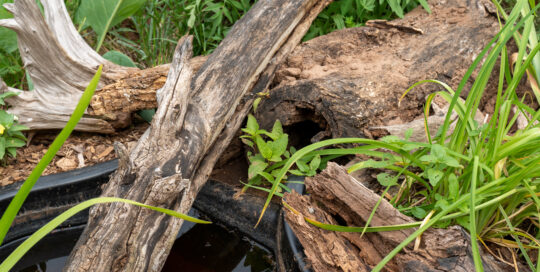Swamp milkweed: valuable to monarchs and more
Views: 2036

When I was first gifted swamp milkweed, I wasn’t sure where to put it. I garden without irrigation, so I decided to try it in a large, half-barrel pot in partial shade. To my surprise, the plant actually thrived, and it had more monarch caterpillars on it than all my other milkweeds combined. Swamp milkweed is valuable to more than just monarchs, however. It is also used by many other pollinators.
The Basics
Swamp milkweed, scientifically known as Asclepias incarnata, is a perennial herbaceous plant native to North America. It belongs to the milkweed family (Apocynaceae) and is closely related to other milkweed species such as common milkweed (Asclepias syriaca) and butterfly weed (Asclepias tuberosa). Swamp milkweed typically grows to a height of 2 to 4 feet (0.6 to 1.2 meters) and forms clumps of erect stems. Admittedly, I had to use a tomato cage to help my first plants stand up without flopping.
The stems are smooth or slightly hairy and are often branched near the top. The lance-shaped leaves are opposite and arranged along the stems. They are deep green in color and can reach lengths of 3 to 6 inches (7.6 to 15.2 centimeters). The flowers of swamp milkweed are showy and occur in clusters at the top of the stems. They are typically pink, but variations in color, ranging from pale pink to dark rose, can occur.
It’s important to note that while swamp milkweed is generally safe, all milkweed species contain cardiac glycosides that can be toxic if ingested. Therefore, caution should be exercised, especially around livestock and pets.
Growing Swamp Milkweed
As the name suggests, swamp milkweed typically grows in wetland habitats such as marshes, swamps, stream banks, and along the edges of ponds and lakes. It has a wide range and is native to various regions in North America, including the eastern and central parts of the United States and southern Canada.
Asclepias incarnata is a popular choice for native plant gardens, rain gardens, and butterfly gardens. It thrives in moist to wet soil conditions, but it can also tolerate average garden soil with adequate moisture. It prefers full sun but can tolerate some light shade. Swamp milkweed is a perennial plant. It can be propagated through seeds or by dividing established plants.
Once established, swamp milkweed requires minimal maintenance. Adequate water during dry periods and regular removal of spent flower heads can help promote continuous blooming. It may benefit from a cut-back in late fall or early spring to encourage vigorous growth and prevent self-seeding.
Wildlife Benefits
Swamp milkweed is highly attractive to a variety of pollinators, particularly butterflies and bees. The nectar-rich flowers provide a valuable food source for monarch butterflies, along with other species like swallowtails, fritillaries, and bees. Additionally, swamp milkweed serves as a host plant for monarch butterfly larvae (caterpillars).
Asclepias incarnata plays a significant role in the conservation of monarch butterflies. Monarchs rely on milkweed plants as their sole food source during the larval stage. By planting this and other milkweed species, individuals can contribute to monarch habitat restoration and help support declining populations.
In addition to attracting butterflies, swamp milkweed provides habitat and food for various other wildlife. Its leaves are consumed by herbivorous insects, and the seeds are a food source for birds. The plant’s dense clumps and fibrous root system also provide shelter for small animals.
Meet Leslie Miller
Leslie Ann Miller shares 3.5 acres in rural Oklahoma with birds, butterflies and wide variety of animals. She is currently transforming her yard with plantings…
Leslie's Recent Posts

Creating microclimates and microhabitats to benefit wildlife






